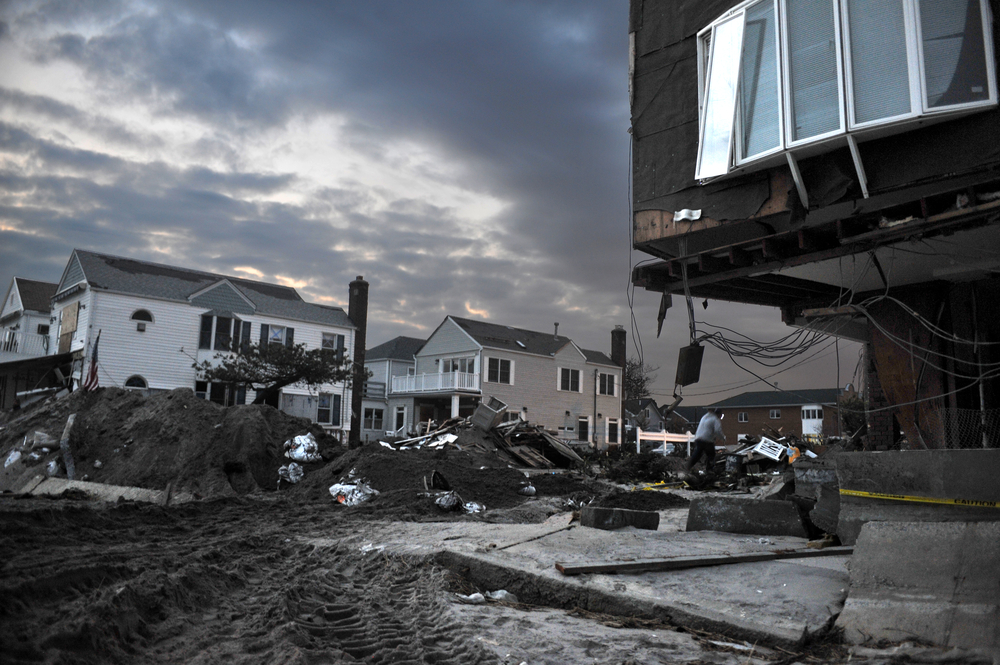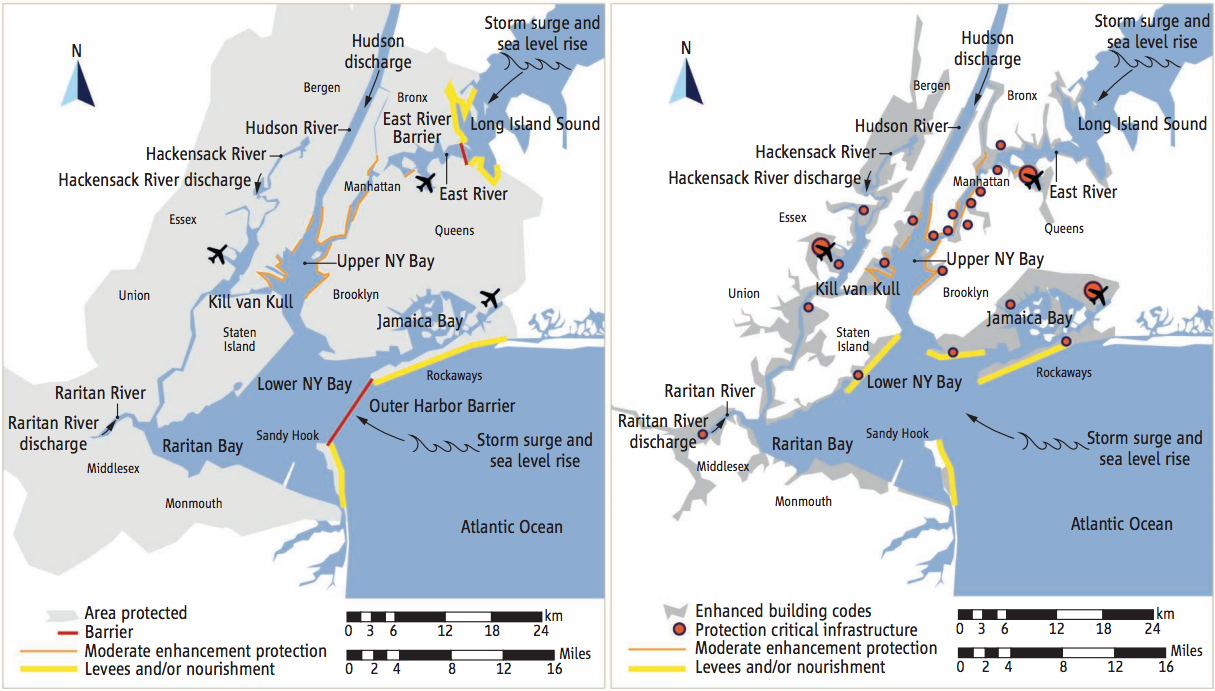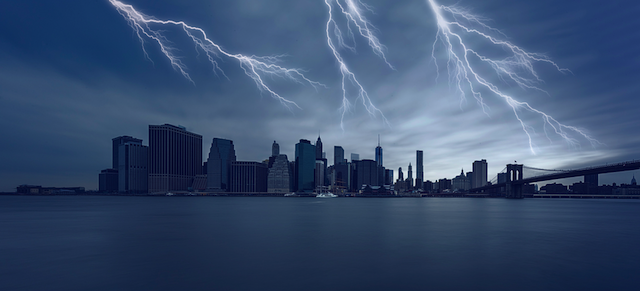Humans are almost universally bad at planning for the distant future — most of us would rather live in blissful, unprepared ignorance than think about our superannuation. The same goes for cities: Dealing with the next storm is way easier than spending many billions of dollars to protect us from storms 20 years down the road.
Unfortunately, that’s just what we need to do — according to an international team of scientists who just published a report on preparing NYC for a very wet future in the journal Science. The paper attempts to parse a bunch of differing approaches to mitigating the next mega-storm to hit Manhattan — or any other coastal city. For example, should the city focus on changing building codes and making sure home and business owners have flood insurance? Or should it be spending its dough on huge infrastructural investments, like levees and surge barriers?

Damaged houses without power at night in Rockaway beach on November 11, 2012. Image: Anton Oparin.
Using more than 500 flood simulations, the scientists were able to calculate roughly how much cash NYC should expect to spend on flooding every year, plus how much the city will lose over the next century if it does absolutely nothing. The results aren’t surprising but no less ugly: Another century floor would cost us $US2.2 billion. A 1,000 year flood? $US25 billion.
In light of those numbers, the cost of retrofitting doesn’t seem so bad. At the same time, like all good scientists, the authors are the voice of reason: They seem fully aware that pushing a huge, creaking, old-arse city like New York into action isn’t going to be easy. So, rather than insist on a single plan at a single cost, the paper sets out three options for NYC (and other coastal cities) — kind of like a S, M, and L for infrastructural planning.
At the small end of things, the city would spend on strengthening what is already has: From updating subway flood-proof systems to making sure businesses take advantage of Federally-subsidized flood insurance. At the large end, the city would undertake a gargantuan, 20-year construction project to block off the multiple different entrances to New York harbor with surge barriers and levees.

A barrier stretching from Sandy Hook to the tip of the Rockaways, for example, would protect Lower Manhattan. Another at the start of the East River, between the Bronx and Queens, would protect the northern edges of the city. There’s also a middle ground — a third way that combines aspects of both the high and low end of the spectrum.
But all that surge protection is going to be pricey (and slow): The authors estimate that blocking off the entire harbor would cost $US24 billion, while the smaller plan would cost around $US11.6 billion. But, they add, there are ways to offset the costs, a $US10 tax for tourists on each of the city’s 50 million annual tourists, for example.
Whatever the city decides to do, it’s going to cost us: Either in post-storm damages, or pre-storm construction. The question is whether we have the decades-long foresight to get cooking on the latter — and fast. [Science via Ars Technica]
Image: Anastasios71.
